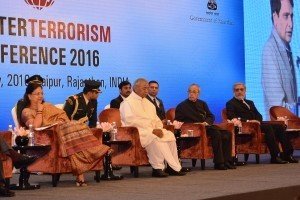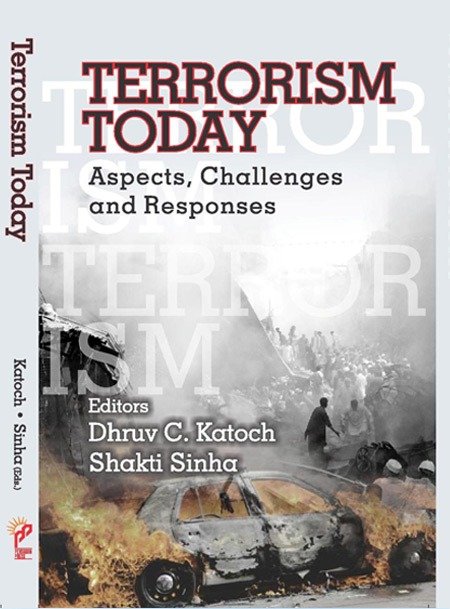~ By Apurv Kumar Mishra
In the harsh winter of 1962, when Indian army was fighting Chinese aggression on battlefields higher than 14,000 feet, the Communist Part of India placed ideology over country (‘China’s Chairman is our Chairman’) and decided to support China. Prime Minister Nehru was forced to declare emergency- the first time in India- and arrest several communist leaders across the country. Among those arrested was V S Achuthanandan, then a central committee member and later the Chief Minister of Kerala.
In order to dispel the notion that communists were anti-India, Achuthanandan proposed during several weekly meetings in jail that the communists should donate blood for the jawans and donate the money collected from sale of prison rations to the defence fund of the government. Each time, the proposal was vehemently rejected and eventually things got out of hand leading to scuffles between the communists. The plan was eventually dropped but retribution was yet to come. Years later in 1965, a party worker filed a formal complaint against VS and he was held guilty of anti-party activities. The punishment? A demotion from central committee to branch level and a year-long exileto Alappuzha district Secretariat.
The story resonated when anti-India slogans were raised by a fringe group on JNU campus just as the nation was mourning the loss of Lance Naik Hanumanthappa Koppad. No civilized country, especially one which goes to extraordinary lengths to ensure free and fair trial even for terrorists like Ajmal Kasab and Yakub Memon (Supreme Court was opened at 3 am to hear his final mercy petition), can tolerate a call to destroy the country from one of its university campuses. A complaint was accordingly registered leading to investigation by the police).
All the commotion in JNU is over the fact that the police had taken into custody (not arrested) a student accused of being involved in a rally, which raised anti-India slogans. The police believes that they have enough evidence to prove his complicity while his supporters believe that he is being unjustly framed for the actions of a fringe group of students. The court will finally decide who is correct and it would have been advisable for the student community to hold back its protest till a court of law had delivered its opinion on the charges against Kanhaiya Kumar.
Throughout this debate, there has been an effort in mainstream media to portray sedition as defined in section 124A of the Indian Penal Code as an archaic colonial-era law that has no place in modern democracies. The fact is that this law in some form exists in the statute books of most countries of the world including USA and Germany. Even in Britain, where sedition law was repealed in 2009, sloganeering of the kind seen in JNU would probably result in conviction under the ‘encouragement of terrorism’ provision of Terrorism Act 2006. The country is now contemplating Extremism Disruption Orders and Banning Orders on groups that aim to undermine democracy and radicalise young people.
At the same time, courts in mature democracies have been wise enough to strike a balance between freedom of speech and seditious libel. In course of several judgments, courts have narrowed the scope of ‘sedition’ and have specified the threshold for this offence. The Indian provision on sedition has survived several attempts to challenge its constitutionality and exists today for the limited purpose of preventing acts that ‘cause disaffection towards the government established by law’ and ‘incites people to violence and to disrupt public order’. As a result of the well-defined jurisprudence on the subject, there have been an increasingly low number of convictions for the crime of sedition. In India, for example, there have been only fourteen cases of sedition in last fifteen years, of which only three have resulted in convictions- hardly the numbers befitting a ‘repressive law’.
Eventually, the debate on sedition metamorphosed into a debate on the entire JNU community and the Indian Left. It is no doubt unfair to brand an entire university ‘anti-national’ or the entire country as ‘intolerant’ based on the acts of a fringe group. However, it is a bit hypocritical for the JNU folks to talk about the freedom of speech and expression when just last year they denied Baba Ramdev the opportunity to address the 22nd International Congress of Vedanta within their campus. According to Rashmi Das, a few years back L K Advani was not allowed to step inside the campus to launch a book on Spanish grammar. Truth is, there has been, to borrow a phrase from the political philosopher Sheldon Wolin, an inverted totalitarianism of the Left in the Indian academia where ideology trumps merit, students are lulled into a narrative of grievance against all established institutions and respectability has been denied to the works of even great historians like Sir Jadunath Sarkar and R C Majumdar.
Where was the outrage when communist apparatchiks were openly circulating lists of ‘undesirables’ in educational institutions after the UPA first came to power in 2004? Who showed solidarity with Prof J S Rajput, when HRD Ministry under Arjun Singh got UNESCO to withdraw the prestigious Jan Amos Comenius award it planned to confer the former NCERT Director and the ministry instituted three frivolous departmental inquiries against him? Where were the protest marches in support of Shirin Dalvi of Urdu newspaper Avadhnama who was arrested for re-printing the Charlie Hebdo cartoons and is now forced to make ends meet by selling her jewellery?
There are certain cherished values that have been bequeathed to us for which generation upon generation of great Indians fought for. These values – independence, democracy, individual freedoms, rule of law and spirit of brotherhood among citizens – cannot be obtained by an individual but must be collectively celebrated and protected. In respect of such things, to quote Roger Scruton, the work of destruction is quick, easy and exhilarating; the work of creation slow, laborious and dull- just have a cursory look at the fate of other countries that obtained independence since 1947. The courts will eventually decide whether the slogans raised at JNU were seditious, legally speaking. However, the chanting of such slogans at an elite university in the national capital was a direct assault on the sense of nationhood and anguished a large majority of Indians who understand the difference between the severest critique of a government and a call to arms against the country itself.
Postscript:
In the 1960s, when the Indian state was fighting wars against China and Pakistan, facing a massive agrarian crisis and grappling with political instability, another powerful separatist movement led by C N Annadurai for a separate Dravid Nadu was at its peak. However in the aftermath of the 1962 war- precisely when the country’s morale was its weakest- they surprisingly gave up the demand for a separate nation. On being asked why he did not seize the moment to push his agenda, C N Annadurai said, ‘When the country is in danger, for us to advocate separatism would be to give way to the foreigner.’
Apurv Kumar Mishra is Young India Fellow (2013-14), Ashoka University. The views expressed are his own.

































